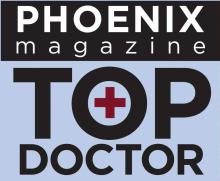Up to 70 million Americans have sleep apnea, and the vast majority (90 percent) are undiagnosed. Children can have sleep apnea, too, though it is much more common in adults. The Insomnia and Sleep Institute of Arizona helps patients as young as two years old to address every sleep disorder, including all kinds of sleep apnea. Obstructive sleep apnea (OSA) is the most common, but there is also central sleep apnea (CSA). There are many reasons sleep apnea goes undiagnosed or untreated, but if you have been diagnosed with sleep apnea or suspect you have it, it’s important to know the full risks of this common disorder.
Research shows that those with OSA tend to undergo elective surgeries more often than others. However, anesthesia and OSA can be a deadly mix if it is ill-managed. If sedatives and anesthesia are given to someone with OSA, this causes airways to be even likelier to collapse and collapsed airways are what “cause” the apnea to occur. When airways collapse, regardless of the trigger, the body cannot properly respond to low oxygen levels. This drastically increases the risk of a severe cardiac event—but not necessarily right away. In fact, recent studies show that these cardiac events can occur in the days following the surgery.
The Meeting Point of OSA and Surgery
According to Professor Frances Chung at the University of Toronto’s anesthesiology and pain medicine department, cause of death might not be connected to OSA. Instead, “You think the patient may have died of something else, like a heart attack or pulmonary embolism,” according to Chung. Chung recently published research in JAMA that details how in the month following a surgery, 21.7% of patients with OSA experienced a cardiovascular event. This is compared to just 14.2% of post-operative patients without OSA. The difference is “significant” says Chung. Those at the highest risk were diagnosed with “severe sleep apnea.” In total, Chung’s study included 1,218 patients considered “at risk” of a cardiovascular event following surgery.
The exact type of event varied, including cardiac death, myocardial injury, thromboembolism, stroke, congestive heart failure, and atrial fibrillation. So, what can be done about this potentially lethal connection? Chung urges widespread screening of sleep disorders, but that is an enormous undertaking for healthcare systems. Instead, it is important to bear in mind that sleep disorders—especially OSA—are very common. Unfortunately, many sleep specialists require a referral from a GP, which can entail a long and frustrating process. No referrals are needed at The Insomnia and Sleep Institute, where we are home to the “Top Doc” in the area for several consecutive years. Staffed by sleep specialists, we are an outcome-driven clinic committed to providing correct diagnoses so testing and treatment can quickly commence.
More Surgical Risks Than Expected
Currently, there is a STOP-BANG questionnaire that Chung urges more surgeons to adopt. She stresses that it cannot, of course, replace seeing a sleep specialist but it has the potential to save lives. The questionnaire is a simplified assessment tool for OSA, but does not in any way replace an actual diagnosis or testing. However, it may help patients to postpone surgery until they see a sleep expert for proper diagnosis. Unfortunately, many surgical clinics do not offer the STOP-BANG questionnaire.
If you are considering elective surgery and have not seen a sleep specialist, it’s time to schedule a consultation with a sleep expert today. OSA is highly prevalent and many common symptoms are considered “normal” sleep behavior, such as snoring or waking up briefly throughout the night. OSA can range in severity and even those with mild sleep apnea face an increased risk of post-operative cardiac events. Elective surgeries should be preceded by checking in with your local sleep specialists at The Insomnia and Sleep Institute for your safety and peace of mind. Schedule your consultation today by calling the office or filling out the online form.





